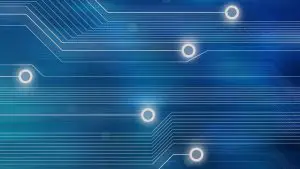Control of cooling fans has become increasingly popular as efforts are made to reduce system power consumption and mechanical fan noise. The purpose of including a fan is to reduce temperature and keep it as low as possible. Mean time to failure for a variety of systems increases rapidly as temperature elevates. This has brought about a wide choice of thermally based fan … [Read more...]
The Benefits Of Using Hadiabatic In Thinking About Electronics Cooling
The heat transfer coefficient is used to describe convective heat transfer between a solid and a fluid, as in Equation (1). The heat transfer coefficient is a defined parameter, not a physical property like thermal conductivity, and different definitions are used for different situations. The preferred definition for use in the electronics-cooling situation is … [Read more...]
Prediction of Thermal Contact Resistance
All engineering surfaces exhibit some level of microscopic roughness. The resistance to heat flow through a contact interface occurs because only a small portion (usually 1-2%) [1] of the nominal surface area is actually in contact. Heat may pass through the interface via three paths: conduction through the contact spots, conduction through the gas present in the gap between … [Read more...]
Recognizing the Limits of Conventional Axial Hub-Motor AHS Devices
Conventional axial hub-motor AHS (Active Heatsink) devices (Figure 1) have reached their functional and cost limits and may not be improved significantly. These devices have a number of inherent, severe contradictions (design limitations) that determine the "evolutionary maturity" of this concept. Figure 1. Conventional axial hub-motor AHS. Let us look at different … [Read more...]
A Few Design Techniques On How To Reduce The Power
There will always be the need to get heat out of high power circuitry, but with a little extra design effort up front, we may be able to reduce overall power needs. Here are two techniques that can help do that. Turn Idle Circuits Off A circuit that is not always used can be turned off until needed. This is a technique widely used in battery powered electronics, but it can be … [Read more...]
- « Previous Page
- 1
- …
- 5
- 6
- 7
- 8
- 9
- …
- 12
- Next Page »









